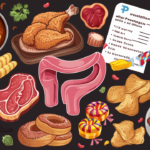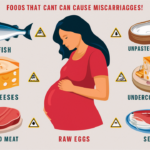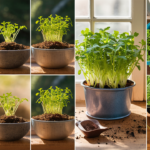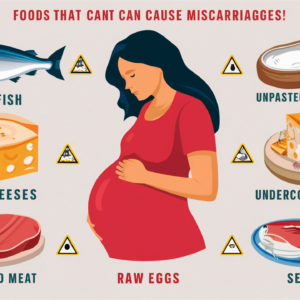Everyone’s talking about whole grains. And they are also an important component of our Mediterranean Diet. The US 2010 dietary guidelines recommend that Americans eat at least half their grain intake as whole grains. So what is a whole grain? Any food made from wheat, rice, oats, cornmeal, barley or another cereal grain is considered a grain.
A whole grain contains all three parts of the kernel. The bran, the germ and the endosperm.
- The bran is the outside coat of the kernel. And it contains B vitamins and fiber.
- The germ is the embryo which if fertilized will sprout to make a new plant. It contains B vitamins, protein and healthful fats.
- The endosperm is the germ’s food supply. And is mainly starchy carbohydrates and some proteins.
Milled Grains
Most grains that are milled, such as wheat, have the germ and bran removed. Which also removes many of the grain’s nutrients. The remaining endosperm is used to make flour. Some examples of whole-grain include whole wheat, corn, brown rice, wild rice, farro, oats, barley. Quinoa, sorghum, spelt rye, bulgur, millet and popcorn are also considered whole grains.
Whole grains can be whole, cracked, ground, rolled or flaked kernels.

Nutrition Facts
Whole grains are important because they supply B vitamins, protein, fibre, magnesium, iron, phosphorus and vitamin E. The fibre in whole grains is mostly insatiable. And it is important for maintaining regular digestive flow. Current scientific evidence also shows that whole grains play an important role in lowering the risk of chronic diseases. Such as stroke, heart disease, type two diabetes, obesity and some digestive system cancers. They also help with weight control. It is important to know that fibre varies from grain to grain. For example, brown rice has 3.5% fibre while barley and bulgur have over 15%.

Both fibre and whole grains have been shown to have health benefits. But they are not interchangeable. Check the nutrition facts label to find out whether a product is made from whole grain and how much fibre it contains. Whole-grain foods may contain different amounts of whole-grain ingredients. But they all can count towards getting the recommended number of whole-grain servings each day.
Choosing Whole Grain Products
The next question is just how do you find whole grain products in the supermarket? It’s not easy but doesn’t worry I’m here to explain. The problem is current food labelling can make it difficult to find the whole grain in a food product. “Whole grain” does not appear on the nutrition facts panel. And the ingredient list may not clearly indicate the amount of whole grain present in a food. Luckily there is a number of ways you can use to help you choose whole grains at the supermarket.
1. Look At The Ingredient Label
It’s important that you learn to read nutrition labels given on different products. Only then would you know which product is good for you. If the first ingredient says whole before a type of grain. For example whole wheat flour, whole oats or whole rye. Then the product is more likely to be a whole grain product.
However, this is not guaranteed. If the whole grain appears farther down the list, the more likely it is that the product does not have enough whole grain to make the USDA serving.

2. Look For The Whole Grain Stamp
The second thing you can do is to look for the whole grain stamp on the package. This stamp makes it easy to find products with whole grains. The 100% whole grain stamp lets you know that a food contains a full serving of 16 grams or more of whole grains in each labelled serving and that all the grain is whole grain. There is also a basic whole grain stamp that signifies that a product contains at least eight grams or half a serving of whole grain per labelled serving but may also contain some refined grain.
3. Search For The Whole Grain Symbol
You may find food companies stating the number of whole grains in a serving of their product or using a whole grain symbol to illustrate foods with whole grains. This will be on the front or top of boxes where you can see it as you shop. This is becoming more common on cereal packages. Just be sure to also check the ingredient label.

Examine Your Choices
Now it’s time to examine your food choices. Take a look at the packages in your pantry. How many would qualify as whole grains? If not many try to replace some of these refined grains with whole grains. Try substituting white rice or pasta with brown rice, wild rice or whole wheat pasta. You can also experiment with ancient grains that are making a comeback, including quinoa, farro, bulgur, millet, spelt and sorghum. Many people choose these ancient grains because they’re nutrient-rich and high in protein and fibre. Some are chosen as gluten-free alternatives to traditional grains and many are less processed or modified.
Tips to Get You Started

Ever wonder how to incorporate more whole grains into your diet? Well, there are many ways to add whole grains to your meals. You can substitute a refined grain product with a whole grain product when preparing your favourite meals and recipes. You can choose 100% whole wheat bread instead of white bread or prepare equal amounts of brown rice and white rice to use in recipes throughout the week. So, just remember to replace refined grains with whole grains. Refined grains undergo milling to remove the bran and the germ this is done to give grains a finer texture and to lengthen their shelf-life. Although most refined grains are enriched to add back the nutrients that were lost in processing.
Here are a few ideas to how you can start on whole grains.
Quinoa
It is a great source of protein. And has a nutty, smoky flavour and can be used just like rice. It can be served hot or cold.
Farro
Farro is the oldest cultivated grain in the world. It has a chewy, firm texture and can be used in soups and salads.
Bulgur
Bulgur is very high in fibre and low in fat. It is commonly used in cold salads and stir-fried dishes.
Spelt
Spelt has a sweet nutty flavour which is similar to barley. It is found in whole berries ground into flour. Spelt is commonly used for baking. It can also be cooked and substitute for rice and pasta for many dishes.
Millet
It is originally from China and North Africa and it has a mild corn-like flavour. And is rich in magnesium. It can be used in salads and stir fry or warmed with milk for breakfast.
Sorghum
Sorghum is gluten-free and has a chewy texture. It can be served hot or cold and can replace noodles in soups and stews.
So don’t be afraid to experiment. Try making risottos, pilafs and other rice-like dishes with whole grains. Such as barley, bulgur, millet, quinoa or sorghum for added nutrition and taste. As you try different whole grains you will find that they are delicious as well as healthy.











I enjoy the efforts you have put in this, thankyou for all the great blog posts.
Thanks so much for giving everyone a very spectacular chance to read articles and blog posts from this web site. It is always so sweet and stuffed with a good time for me and my office colleagues to visit the blog really thrice in 7 days to read through the latest guidance you have. And of course, we’re certainly contented for the astounding opinions you give. Selected 1 tips in this article are essentially the most efficient we have all had.
Can you be more specific about the content of your article? After reading it, I still have some doubts. Hope you can help me.
Thanks for all your effort on this blog. Kate really likes managing internet research and it’s really easy to understand why. Most of us learn all regarding the dynamic tactic you deliver informative things through your blog and as well welcome participation from visitors about this content plus my daughter is without question studying a lot. Take advantage of the rest of the new year. You’re conducting a fantastic job.